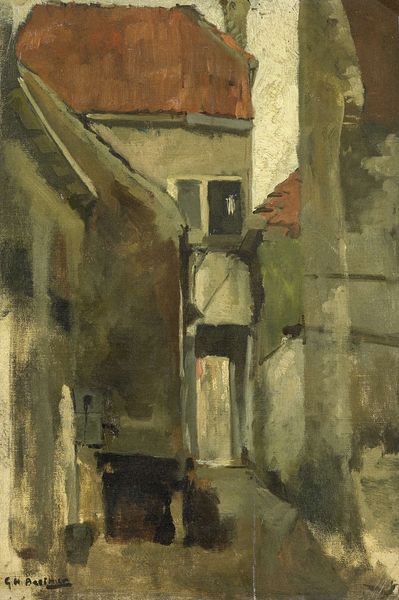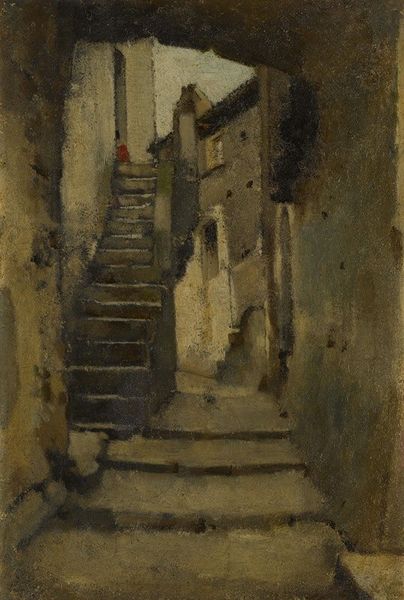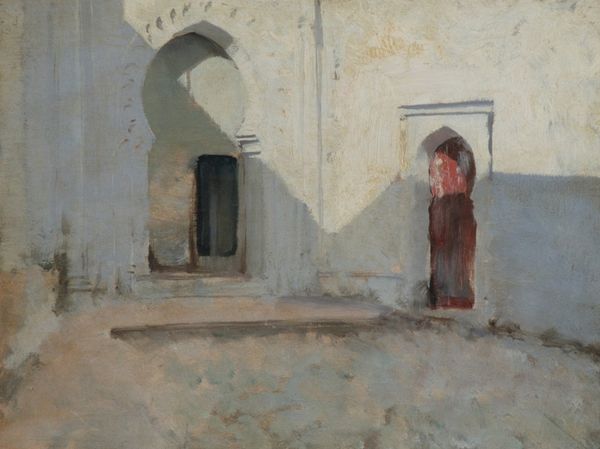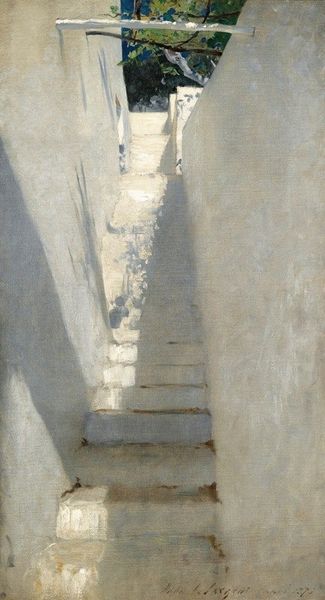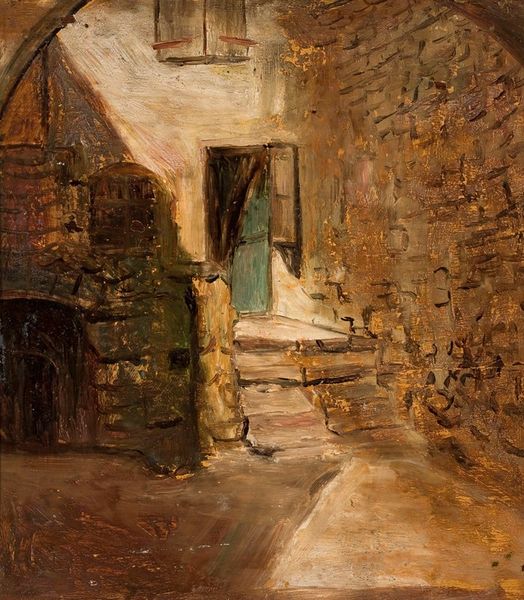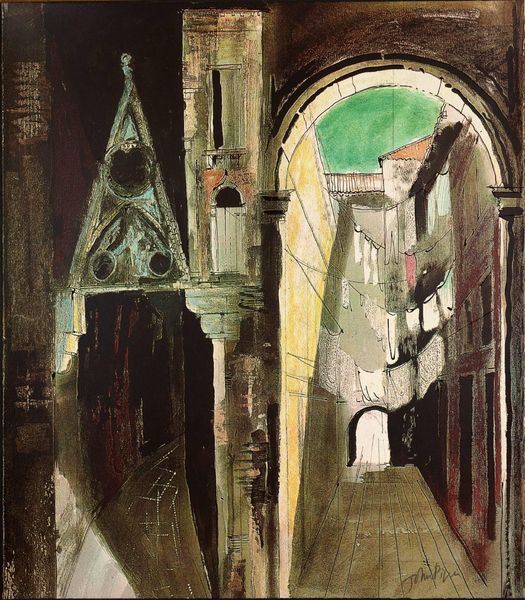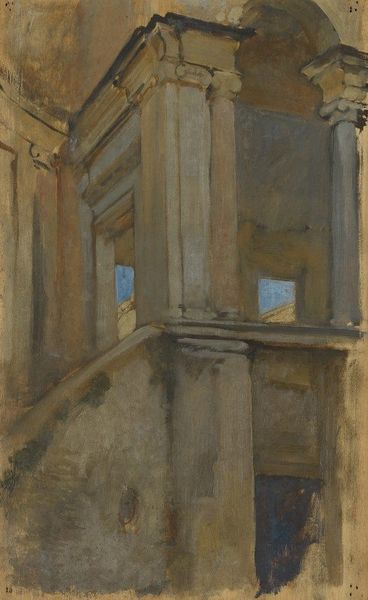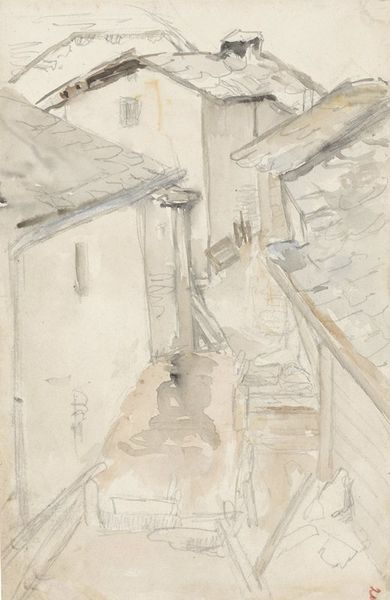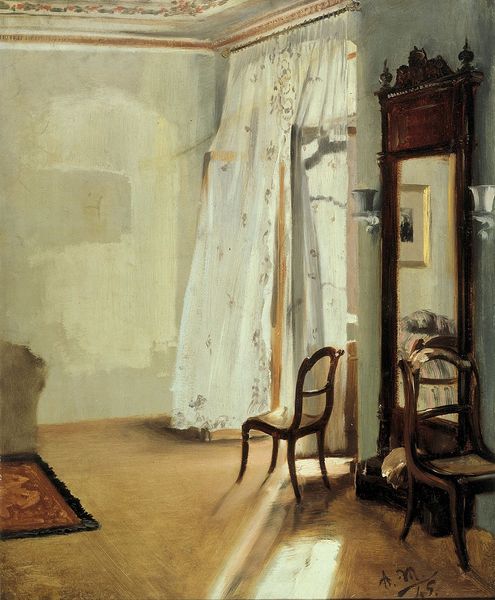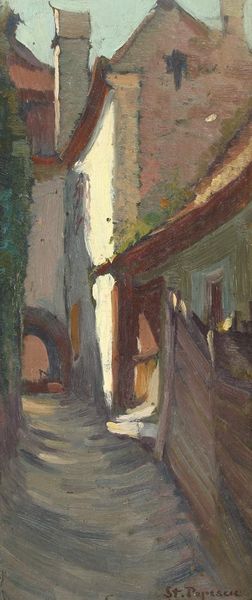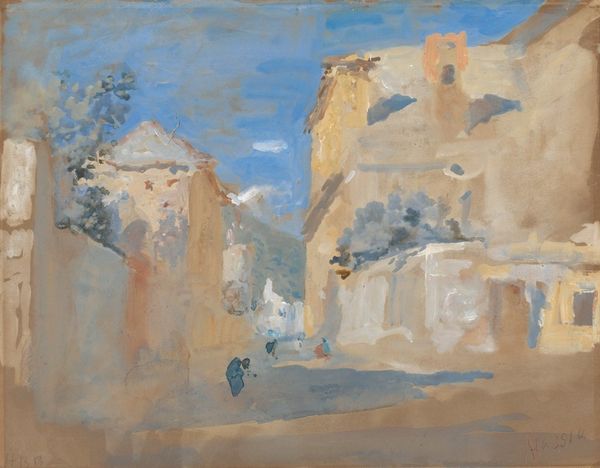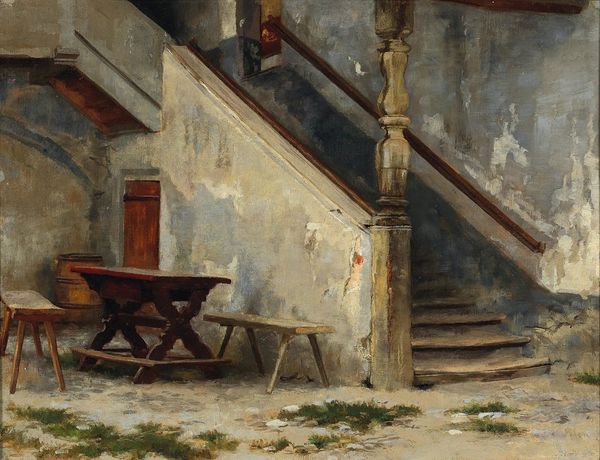
The house of Don Giovanni Verità 1885
0:00
0:00
silvestrolega
Museo civico Giovanni Fattori, Livorno, Italy
painting, plein-air, oil-paint
#
portrait
#
painting
#
plein-air
#
oil-paint
#
landscape
#
oil painting
#
genre-painting
#
italian-renaissance
#
realism
Dimensions: 37 x 28 cm
Copyright: Public domain
Curator: Here we have Silvestro Lega’s 1885 painting, "The house of Don Giovanni Verità." Editor: It feels intensely private, almost secretive, doesn’t it? The heavy shadows, the steep stairs…it feels like we’re intruding on someone’s personal space. Curator: Lega’s use of oil paint creates a wonderfully textured surface, lending a sense of weight and solidity to the architecture. Notice the stark contrast between the illuminated doorway and the figure cloaked in shadow. Semiotically, it's fascinating. Editor: Absolutely. And this isn't just about aesthetics. The Garibaldi Risorgimento informs Lega's later landscapes, focusing on individuals, their stories, the subtle resistance brewing beneath a deceptively ordinary surface. The doorway as a threshold for that history, for instance. Curator: One can't help but admire how Lega modulates light across the uneven surfaces. This focus guides the viewer through the work, revealing architectural detail. Editor: The steep, narrow staircase almost functions as a metaphor. What would this space represent for ordinary citizens at the time of Italian renaissance? Was their upward mobility in society as restricted as the one represented in the painting? Curator: Interesting point. Formally, it really holds together though. The perspective, though seemingly straightforward, guides the eye strategically to the focal points. Editor: Perhaps those focal points are social, too. That silhouetted figure almost serves as an everyman, embodying the silent resilience and perhaps even oppression, prevalent during the unification of Italy. It seems this work resists celebrating grand historical narratives, directing our attention toward marginalized figures obscured in the shadow. Curator: So while the stark, formal elements and contrasts work on their own, what resonates most, I think, is the implied tension between the known and the unknown. Editor: Yes. It’s a quiet composition, but filled with understated social resonance, even subversion. It prompts reflection about what kind of stories a house holds, and how histories have been told or remain obscure.
Comments
No comments
Be the first to comment and join the conversation on the ultimate creative platform.
